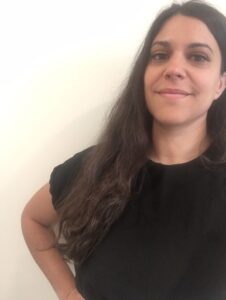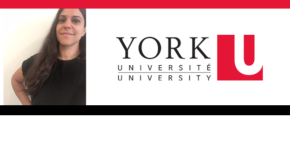 A crisis can provide an avenue forward towards personal growth if managed correctly.
A crisis can provide an avenue forward towards personal growth if managed correctly.
Chiara Camponeschi, Banting postdoctoral fellow at the Dahdaleh Institute for Global Health Research at York University, examines how one group is bringing disparate groups together to chart a path ahead.
Dr. Chiara Camponeschi is a Banting Postdoctoral Fellow at the Dahdaleh Institute for Global Health Research. As an interdisciplinary scholar, her work is situated at the intersections of climate action, community engagement and care, and documents how the principles of wellbeing, solidarity, and collective healing can provide a blueprint for building ‘integrative resilience’ in ways that are more equitable, inclusive, and just. Dr. Camponeschi is also the founder of Enabling City, an international organization devoted to stimulating new imaginaries for transformative social change. She is the author of two popular publications, Enabling City Volumes 1 & 2, that are available in 5 languages, and has spoken at events such as the White House GreenGov Symposium and the inaugural South by Southwest Eco conference in Austin, Texas.
Turning Moments of Crisis into Moments of Care
We live in an age of poly-crisis. Our communities, and our systems, are stressed by a growing number of simultaneous threats. Despite the complex reality of the ‘new normal’ we live in, the action plans of governments everywhere continue to be based on an idea of vulnerability and resilience that is not only outdated, but harmful.
The early months of the pandemic brought renewed vigor to calls for societal transformation, but the lens of crisis continues to be invoked to reinforce a reactive stance to change — one driven by division, disconnection and doom. This erodes the ability of communities to protect themselves while amplifying feelings of hopelessness, eco-anxiety and burnout.
Crises, however, present us with the opportunity to inspire new visions and stimulate action.
The integrative resilience model operates in this space of possibility to change the way we think of what counts as healthy adaptation. The model is distinguished by three key components: a ‘bio-ecological’ understanding of vulnerability, a ‘trauma-informed’ orientation to policy and service design and a ‘healing justice’ approach to systems change.
What does this mean in action?
The worker-led organization, Iron & Earth provides a powerful example of this approach. By partnering with fossil fuel workers and Indigenous Peoples, Iron & Earth supports climate solutions that counter environmental racism, promote dialogue and reconciliation, and lead to the design of ‘infrastructures of care,’ those systems and programs that most support a thriving, healthy, and equitable society at all times — not just during a crisis.
Overall, what makes integrative resilience different is its emphasis on putting the needs, visions, and solutions of communities at the heart of a just climate transition. As a framework for action, it also trains the next generation of leaders to craft more responsive and meaningful action plans.
Read More:
Professional website: www.enablingcity.com
Camponeschi, C. (2021) Narratives Of Vulnerability And Resilience: An Investigation Of The Climate Action Plans Of New York City And Copenhagen. Geoforum (123): 78-88. Https://Bit.Ly/3ahghny
Camponeschi, C. (2022a) Integrative Resilience In Action: Stories From The Urban Frontlines Of Climate Change And The Covid-19 Pandemic. Frontiers In Sustainability Special Issue: Adapting Cities For Transformative Climate Resilience: Lessons From The Field, 1-30. Https://Bit.Ly/3eeh3b0
Camponeschi, C. (2022b) The Resilience Of Urban Entrepreneurialism: Challenging The ‘neoliberal Turn’ Of Municipal Climate Planning. Environment And Planing C: Politics And Space, 1-30. Https://Bit.Ly/3ozav1y
Camponeschi, C. (2022c) Toward Integrative Resilience: A Trauma-Informed And Healing Justice Oriented Approach To Urban Climate Planning. Cities & Health: 1-33. Https://Bit.Ly/3vsmmtz
Iron & Earth, “Who We Are”: https://www.ironandearth.org/who_we_are
